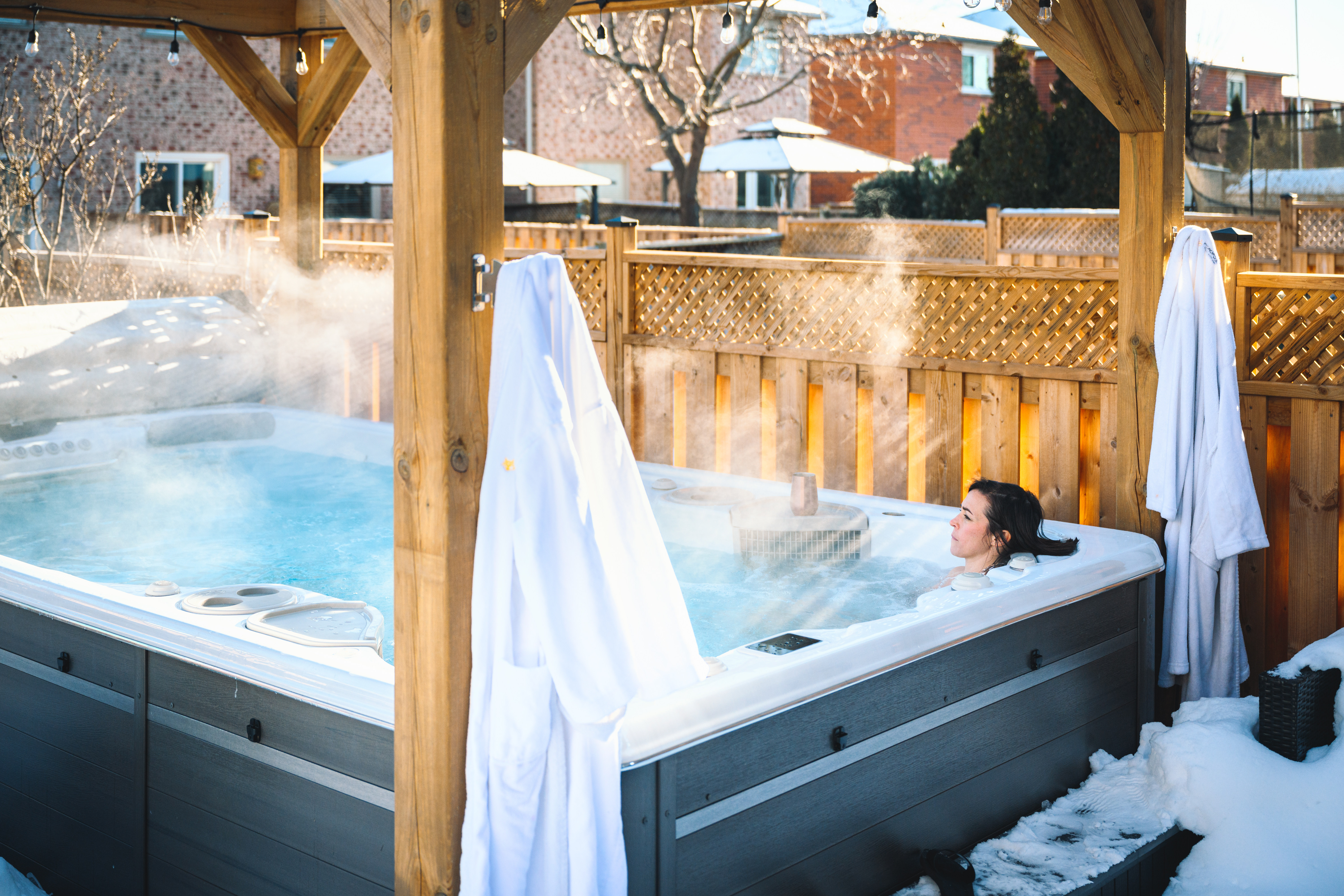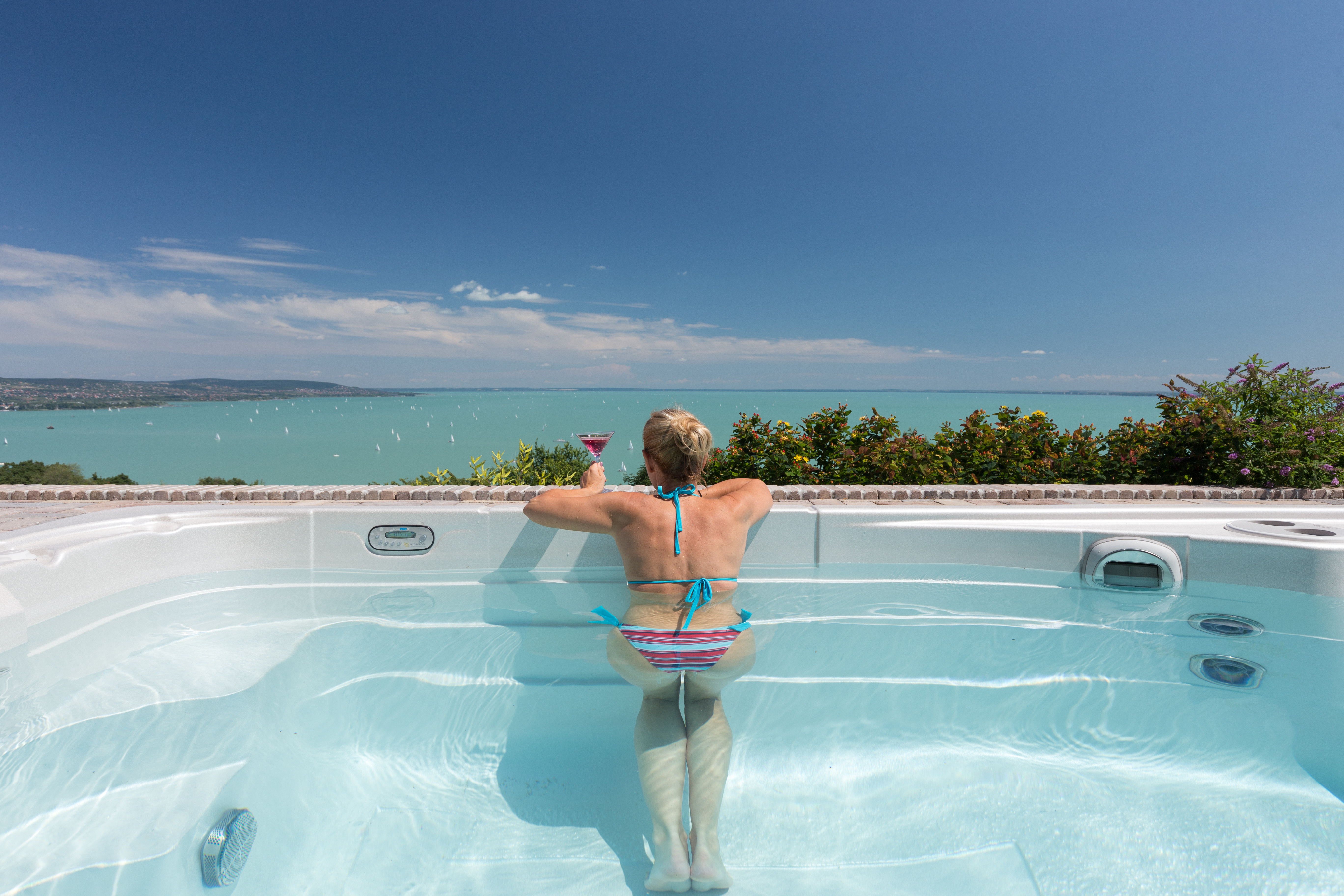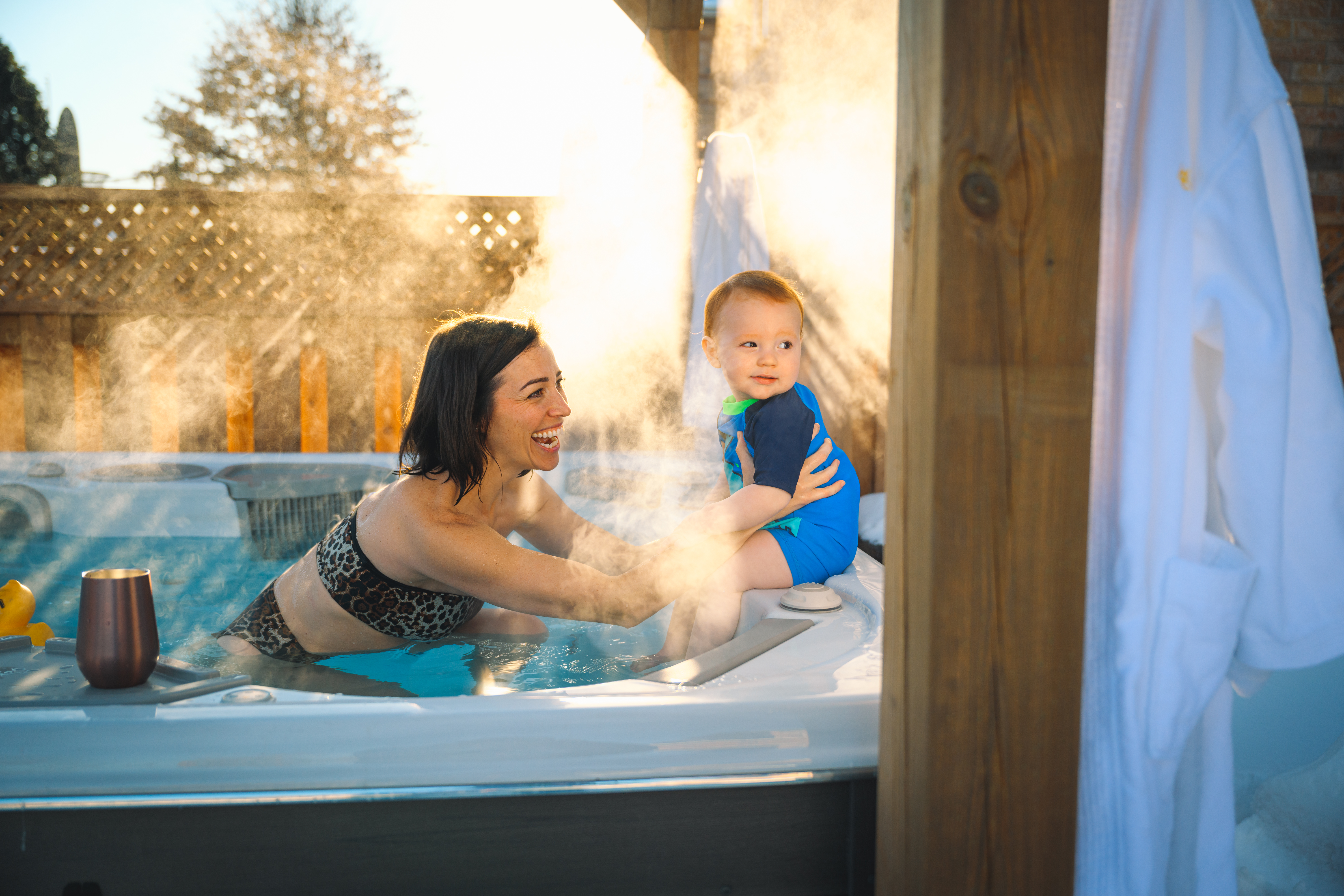For half of the year, many hot tub owners face a common dilemma: how to enjoy their outdoor spa without watching their energy bills soar. At Idaho Spas, we understand that energy efficiency is a top concern for our customers, especially during the cooler months when hot tubs work harder to maintain temperature.
The good news is that with some strategic adjustments and smart practices, you can significantly reduce your hot tub’s energy consumption while still enjoying all the relaxation and therapeutic benefits it offers.
Here’s how to maximize your hot tub experience while minimizing your utility bills this season.
Invest in a Quality Cover
Your hot tub cover is your first line of defense against energy loss. Up to 70% of heat loss occurs at the water’s surface, making a well-insulated, properly fitting cover absolutely essential for energy efficiency.
What to Look For:
- Thickness: Opt for covers with 2-2.5 inches of foam in the center, tapering to 1.5 inches at the edges
- Tight Seal: Ensure there are no gaps where heat can escape
- Cover Clips: Use locking clips to secure the cover against wind
- Regular Replacement: Replace your cover every 3-5 years as foam compression reduces insulation value
When your cover is closed, it should form a tight seal with no visible gaps where steam can escape. If you notice your cover becoming waterlogged or heavy, it’s time for a replacement—soggy covers have lost their insulating properties and are actually costing you money.
Optimize Your Temperature Settings
Finding the sweet spot for temperature settings can lead to significant energy savings without sacrificing comfort.
Smart Temperature Strategies:
- Lower the Temperature When Not in Use: Reducing your hot tub temperature by just 3-4 degrees when you’re not using it can lead to noticeable savings
- Find Your Comfort Zone: Many users find 100-102°F perfectly comfortable (instead of the maximum 104°F)
- Use a Programmable System: If your hot tub has smart controls like the SmartTub™ System, set it to increase temperature shortly before your regular soaking times
Remember that heating from a lower temperature consumes less energy than maintaining a higher temperature around the clock. However, avoid dropping the temperature too dramatically if you use your hot tub regularly, as reheating from very low temperatures is energy-intensive.
Shelter Your Spa
Creating a windbreak or shelter around your hot tub can significantly reduce heat loss, especially during Idaho’s chilly winters.
Effective Shelter Options:
- Strategic Placement: Position your hot tub where it’s naturally protected from prevailing winds
- Privacy Screens: Install decorative screens that double as windbreaks
- Pergolas or Gazebos: These structures not only protect from wind but can add aesthetic value to your backyard
- Strategic Landscaping: Dense shrubs or trees can create natural windbreaks while enhancing privacy
Even a partial shelter can substantially reduce your hot tub’s energy consumption, particularly on cold, blustery days.
Maintain Your Equipment
A well-maintained hot tub operates more efficiently and costs less to run. Regular maintenance is essential for energy efficiency.
Maintenance Priorities:
- Clean Filters: Rinse your filters every 2 weeks and deep clean monthly
- Check for Leaks: Even small leaks force your hot tub to work harder
- Flush Plumbing Lines: Clean internal plumbing every 3-4 months when you change water
- Inspect the Heater: Ensure heating elements are free from scale buildup
- Keep Jets Clean: Clogged jets affect circulation and heating efficiency
When your system runs smoothly, it requires less energy to maintain temperature and circulation. This translates directly into lower energy bills.
Use Circulation Cycles Wisely
Understanding and optimizing your hot tub’s circulation cycles can lead to significant energy savings.
Circulation Tips:
- Run Cycles During Off-Peak Hours: If your utility offers time-of-use rates, program circulation for cheaper rate periods
- Check Circulation Duration: Most hot tubs only need 8-12 hours of circulation daily
- Align with Usage Patterns: Schedule circulation to end shortly before your typical use times
- Consider Ambient Temperature: Circulation needs may increase during extreme cold
Modern hot tubs like those from Jacuzzi® and Cal Spas® offer programmable settings that make optimizing circulation simple and convenient.
Consider Your Hot Tub’s Location
Where you place your hot tub can significantly impact its energy efficiency.
Optimal Placement Considerations:
- Proximity to House: The closer to your home, the less heat loss during trips to and from the spa
- Sunlight Exposure: Some winter sunlight can provide natural warmth
- Ground Insulation: Place your hot tub on an insulated pad rather than directly on cold ground
- Access to Electrical Supply: Shorter electrical runs are more efficient
While you might not be able to relocate an existing hot tub, these factors are worth considering when installing a new spa.
Additional Energy-Saving Tips
Quick Wins for Lower Bills:
- Use a Floating Thermal Blanket: Adding this under your regular cover can reduce heat loss by an additional 10-15%
- Limit Jets Usage: Only run high-powered jets when you’re actually using them
- Check Water Levels: Maintain proper water levels for optimal heater operation
- Time Your Soaks: Use your hot tub during warmer parts of the day when possible
- Keep Cover On: Never leave your hot tub uncovered when not in use, even for short periods
When It’s Time to Upgrade
If you’re operating an older hot tub (10+ years), upgrading to a newer, energy-efficient model could be your best long-term strategy for savings.
Energy-Efficient Features in Modern Hot Tubs:
- Full-Foam Insulation: Provides superior heat retention
- Titanium Heaters: More efficient heating with less energy
- Smart Control Systems: Optimize operations automatically
- Improved Pump Design: Variable-speed pumps use less electricity
- Thermal Layers: Multiple insulation barriers keep heat in
At Idaho Spas, our selection includes models with Thermo-Shield™ insulation technology and WhisperHot™ titanium heaters specifically designed to perform efficiently in Idaho’s climate.
Balancing Comfort and Conservation
The true magic of hot tub ownership in cooler weather is finding that perfect balance between indulgence and efficiency. By implementing even a few of these energy-saving strategies, you can significantly reduce your hot tub’s operating costs while still enjoying all the therapeutic benefits that made you invest in a spa in the first place.
Remember that energy efficiency is a year-round consideration, but the habits you develop during the cooler months can set you up for smart ownership throughout all seasons. The small adjustments you make today—whether it’s optimizing your cover, tweaking temperature settings, or simply being more mindful of usage patterns—can lead to substantial savings over time.
At Idaho Spas, we’re committed to helping our customers make the most of their hot tub experience in every season. Our knowledgeable team is always available to answer questions about energy efficiency, recommend appropriate accessories, or help troubleshoot any issues you might be experiencing with your current setup.
Hot tub enjoyment doesn’t have to come with sky-high energy bills. With thoughtful practices and proper maintenance, your outdoor retreat can remain a source of comfort and relaxation without becoming a drain on your resources. Here’s to warm soaks and cool savings all season long!









